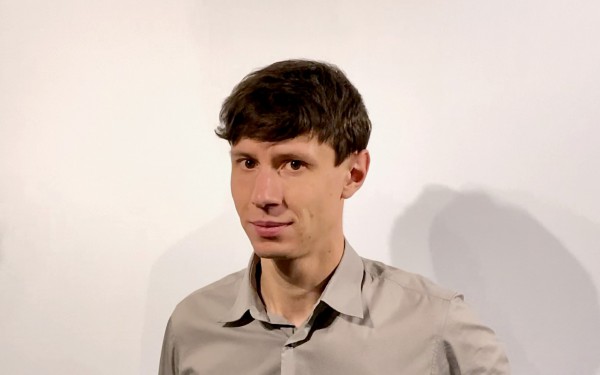Michele Simoncelli wins the 2020 Chorafas Foundation Award for his contributions to the quantum theory of heat conduction in solids
by Carey Sargent, EPFL, NCCR MARVEL
The Dimitris N. Chorafas Foundation awards scientific prizes for outstanding work in selected fields in the engineering sciences, medicine, and the natural sciences, focusing on research characterized by its high potential for practical application. Every year, partner universities in Europe, North America, and Asia evaluate the research work of their graduating doctorate students and propose the best for consideration.
According to the Foundation, prize winners "must be at the top of their class; and must demonstrate by their work that they have considered the consequences of their research for man and nature, and that they are ready as individuals to accept responsibility for these consequences."
Simoncelli’s PhD work has focused on heat propagation in solids, a physical phenomenon of critical importance to several technological applications including electronics, the aerospace industry and the sector of renewable energies. Heat management is, for example, essential in electronics to prevent chips from overheating and heat-insulating materials are highly interesting to the aerospace industry to shield spaceships from extreme temperatures. In renewable energies, this research may help scientists increase the efficiency of processes that can convert heat, a waste product of a number of industrial processes, into electricity.

Simoncelli’s thesis contains two major contributions to the theory of heat conduction. The first is a novel microscopic equation that describes heat transport in very general terms and can be used to predict the thermal conductivity of crystals, glasses (completely disordered materials), and of all the intermediate cases (partially disordered materials), just from their chemical composition. This is a significant first—no transport equation has been able so far to describe simultaneously all of these materials. Most importantly, from the point of view of fundamental science, the equation demonstrates the coexistence of particle-like and wave-like heat conduction mechanisms. That is, that the quantum wave-particle duality also emerges in thermal transport.
The second contribution is a mesoscopic equation that generalizes 200-year-old Fourier law and explains why heat propagation can become fluid-like, rather than diffusive in electronic or phononic devices. The derivation of this mesoscopic equation has offered new theoretical insight into transport theories, showing how microscopic conservation laws can be exploited to transform a complex microscopic (quantum) equation into a much simpler but equally accurate mesoscopic equation.
The microscopic equation will pave the way for the systematic development of novel technologies in the fields of renewable energies and aerospace. In fact, such an equation allows, for the first time, to accurately predict the ultralow conductivity of materials used in spaceships’ thermal shields or in “thermoelectric devices” used to convert heat into electricity. The mesoscopic equation has instead rationalized the very recent experimental finding of hydrodynamic heat propagation in graphite and will be useful for the design of next-generation electronic devices, where heat is the main limiting factor for miniaturization and efficiency.
A full profile on Simoncelli can be found here.
An article on the paper Unified theory of thermal transport in crystals and glasses, published in Nature Physics, can be found here.
An article on the paper Generalization of Fourier’s law into viscous heat equations, published in Physical Review X, can be found here.
Low-volume newsletters, targeted to the scientific and industrial communities.
Subscribe to our newsletter